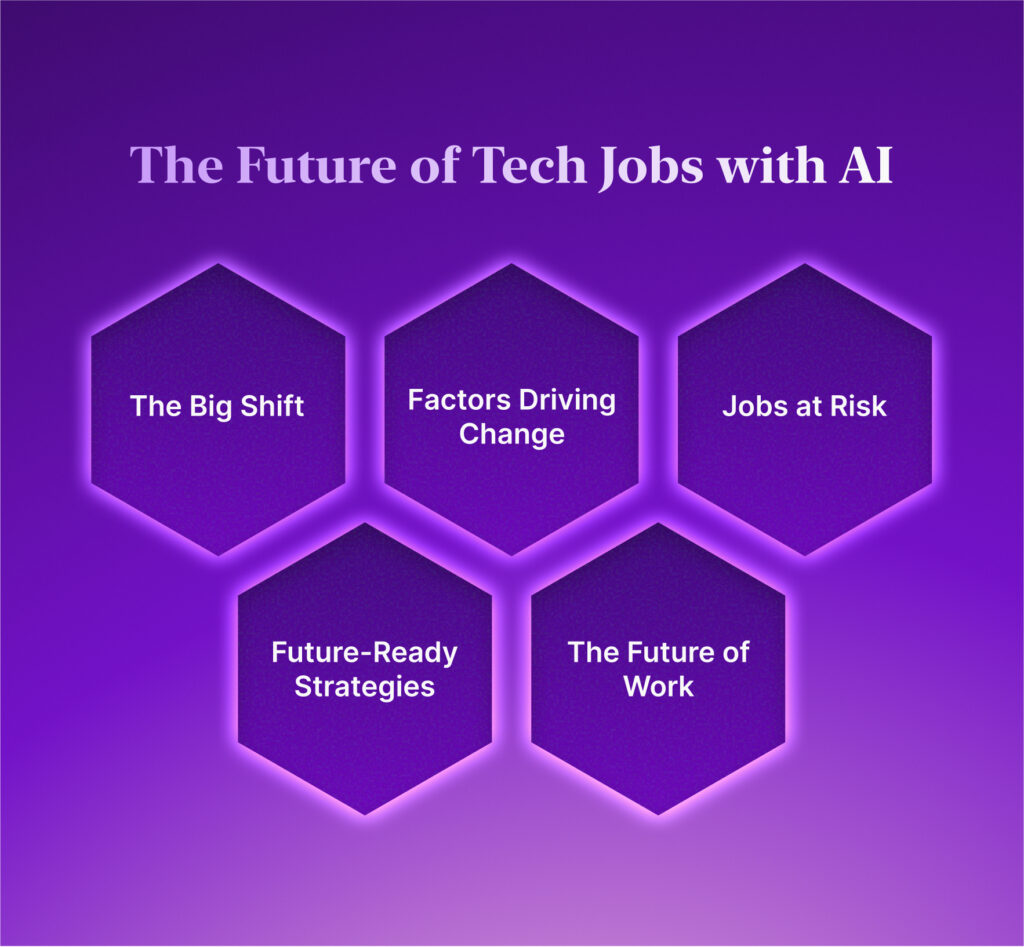Blog > Corporates, Workforce Transformation
Every Role is a Tech Role Now: Why Tech Enablement Must Be Built Into the Fabric of Work

Until recently, technology was considered a vertical domain, managed by CIOs, CTOs, and specialized IT teams. Today, this paradigm has fundamentally shifted. The growing ubiquity of enterprise systems, AI-powered tools, and data-driven workflows has transformed how organizations operate at every level. As a result, every role within an enterprise regardless of function, level, or geography is now, in essence, a technology-enabled role.
This evolution, however, has not been mirrored in how organizations design roles, measure performance, or invest in learning and development. While enterprises continue to allocate significant capital to digital transformation programs, the strategic enabler of long-term success tech enablement at the individual and functional level often remains underdeveloped. The result is a growing disconnect between digital ambition and workforce readiness.
This paper examines the critical importance of embedding tech enablement into the very design of work. It also explores how leading organizations are approaching this shift not as a one-off initiative, but as a foundational principle of performance, culture, and strategic advantage.

The Invisible Shift: When Technology Became Everyone’s Business
Across industries, technology has become the infrastructure upon which all business activity rests. From cloud-based CRMs in sales, to AI-assisted hiring tools in HR, to real-time dashboards in finance and logistics, the underlying reality is clear: almost every function now relies on software, automation, and data for execution.
Consider the example of a mid-level HR manager. Ten years ago, their role may have focused primarily on policy implementation, onboarding logistics, and manual coordination across departments. Today, the same manager must navigate integrated talent platforms, analyze engagement data using digital dashboards, implement nudges for performance feedback, and contribute to strategic workforce planning informed by AI models. The core of the role driving employee experience and outcomes remains unchanged, but the way value is delivered has become inseparably linked to technology.
This dynamic is playing out across every function. Supply chain teams are optimizing for real-time demand forecasts powered by machine learning. Marketing professionals are working with campaign automation tools and predictive analytics engines. Even traditional business support roles such as procurement or compliance are being reshaped by digital workflows, risk monitoring platforms, and AI-enabled document analysis.
This transformation demands a new vocabulary. No longer should technology roles be confined to IT, engineering, or product teams. Every role is a technology role. And more importantly, every role must be treated as such in how it is designed, supported, and enabled.
Understanding Tech Enablement: Beyond Tools and Training
To fully grasp the opportunity, it is essential to clarify what tech enablement means in the context of the modern enterprise. It is not limited to equipping employees with basic digital literacy or running isolated upskilling programs. It refers to a more comprehensive and integrated approach, one that aligns people, processes, and platforms to unlock better outcomes.
Tech enablement begins with fluency: the ability of employees to use digital tools not as a compliance requirement, but as a lever for value creation. It involves understanding how systems work together, identifying when and how to leverage automation, and making data-informed decisions. It requires confidence: the belief that one can experiment with new technologies, contribute to system design conversations, and adapt as platforms evolve. And above all, it demands a culture of curiosity, where employees are encouraged to continuously explore, learn, and improve their digital workflows.
The organizations that succeed in this journey recognize that tools are only as effective as the people who use them. When a new platform is introduced but poorly adopted, the root cause is often not the technology itself, but the absence of meaningful enablement. This may show up in several ways: inconsistent usage, workarounds through shadow tools, growing frustration, or simply stagnation in productivity despite increased digitization.
The Hidden Cost of Under-Enabled Teams
In our work with enterprises undergoing digital transformation, one consistent theme emerges: the failure to invest in tech enablement creates an invisible drag on performance.
When employees are not fully enabled, organizations encounter slower decision-making, reduced tool adoption, and fragmented data integrity. Operational silos persist, not due to poor intent, but due to misaligned systems and skill sets. Cross-functional collaboration becomes difficult, as teams struggle to navigate differing digital proficiencies.
Furthermore, innovation stalls, as employees remain focused on managing complexity rather than challenging assumptions or exploring new possibilities.
Perhaps most critically, the gap in tech enablement can exacerbate workforce inequality. In the absence of structured support, only the most proactive employees succeed in navigating new tools or leveraging data to their advantage. This creates a digital divide within the organization ,one that can influence everything from promotions to performance scores, and eventually impact retention and engagement.
The result is a paradox: companies may invest millions in enterprise technology, but realize only a fraction of its potential, simply because the workforce has not been adequately prepared to use it as a strategic asset.
Tech Enablement as a Strategic Design Principle
To respond effectively, organizations must move beyond training as a tactical intervention. Tech enablement must be embedded into the design of jobs, teams, and leadership models.
This begins with redefining roles. As job descriptions evolve, organizations should explicitly include expectations around digital fluency, data literacy, and technology collaboration. This is not about turning every employee into a data scientist, but about acknowledging that the ability to interact meaningfully with technology is now core to performance across functions.
Second, learning must be made continuous and contextual. Rather than rely on quarterly workshops or one-time certifications, leading organizations are creating learning ecosystems—where employees receive just-in-time nudges, access to in-tool guidance, and opportunities to learn from peers. Enablement is treated not as a standalone curriculum, but as a core component of work design.
Third, internal culture must shift to recognize technology as a shared language across the enterprise. Too often, tech-related initiatives are owned by central teams, with limited input from the people actually using the systems. A more inclusive model encourages frontline feedback, co-design of features, and transparency in implementation. In effect, employees become co-creators of the digital environment they work within.
Finally, leadership must champion tech enablement not just through words, but through action. This includes modeling digital behaviors, allocating budget toward experiential learning, and holding teams accountable for measurable adoption metrics. It also involves shifting the narrative, positioning technology not as a challenge to be overcome, but as a partner in driving purpose, performance, and progress.
Looking Ahead: Human-Led, Tech-Powered
The future of work will not be defined by a binary between humans and machines. It will be shaped by a new partnership, where people are empowered to think, decide, and act with the support of intelligent systems. In this reality, the defining characteristic of high-performing organizations will not be the sophistication of their tech stack, but the depth of their tech enablement.
Every strategic initiative, be it customer experience, operational agility, or workforce productivity, now depends on how well technology is understood, adopted, and utilized by people. As such, tech enablement must move from the margins to the mainstream of business strategy.
Organizations that internalize this shift will be better equipped to navigate disruption, attract digital-native talent, and unlock the full value of their transformation efforts. Those that do not risk falling into a familiar trap: mistaking access to technology for actual change.
Final Analysis
In the final analysis, the path forward is clear. Every role is a technology role. The question is no longer whether to enable your teams, but how quickly, how deeply, and how sustainably you can build that capability into the fabric of work.
